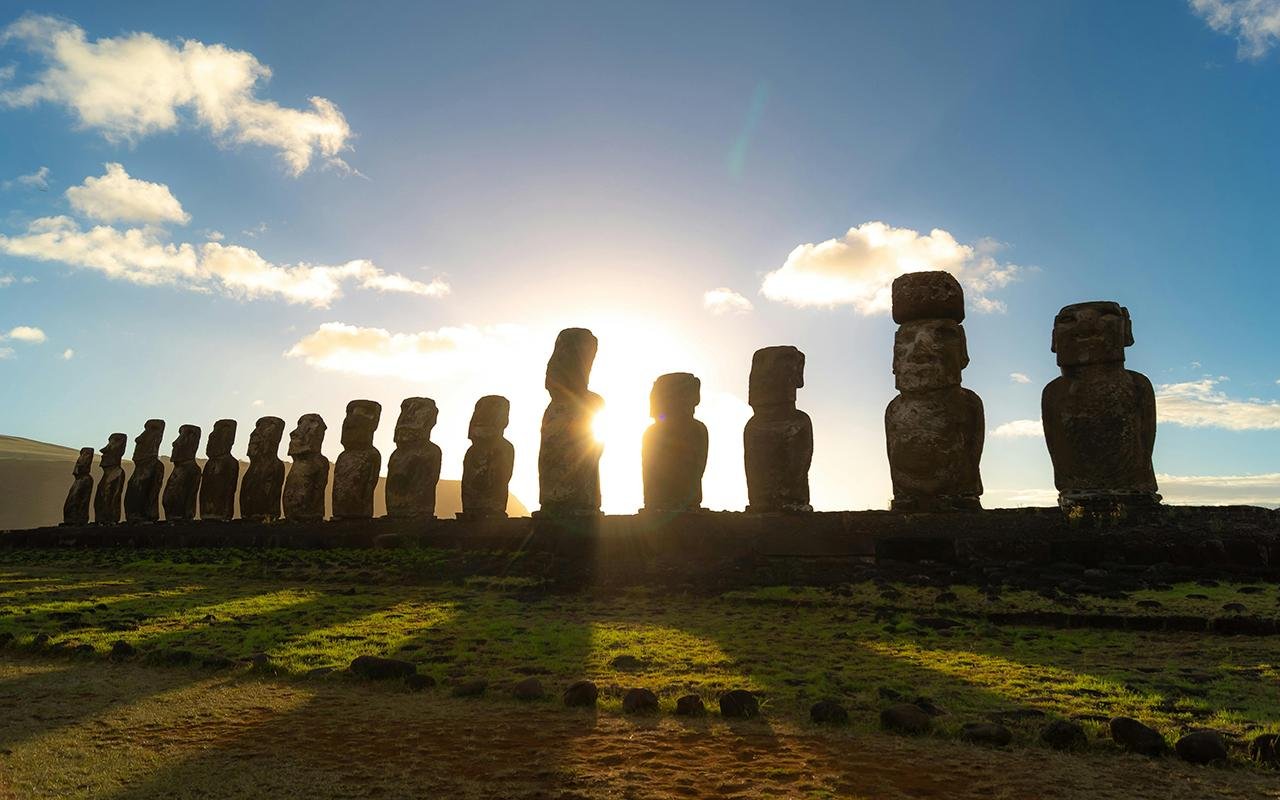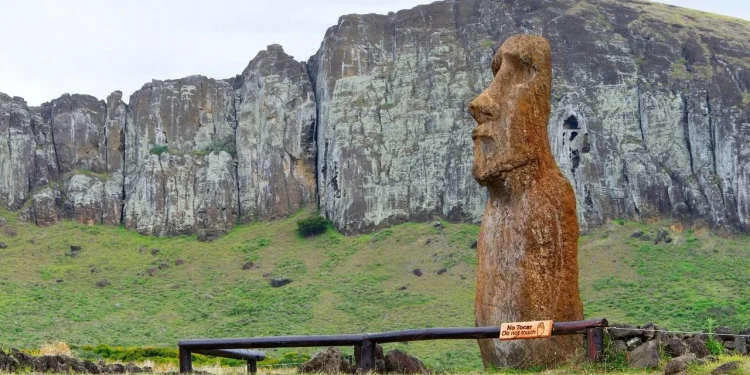For centuries, researchers have been captivated by the mystery of how the ancient inhabitants of Rapa Nui – also known as Easter Island – transported their enormous Moai statues. Now, new research using physics, 3D modeling and field experiments presents the strongest evidence yet that the gigantic stone statues were not dragged or rolled, but “walked” upright to their locations using an ingenious engineering method.

The study, published in the Journal of Archaeological Science, was led by anthropologist Carl Lipo of Binghamton University and Terry Hunt of the University of Arizona. Analyzing nearly 1,000 MOAI statues, including 62 found along ancient roads, the scientists concluded that the statues’ unique shapes were designed to allow movement. The road statues all share distinctive features – a wide D-shaped base and a leaning stance – which would allow them to be shaken from side to side, creating a walking motion.
The researchers built a 4.35-ton MOAI replica based on these proportions to test their hypothesis. They moved the statue 100 meters using only ropes and a team of 18 people, accomplishing this in 40 minutes. The test proved that the forward tilt and curved base made transportation not only possible but efficient, validating the hypothesis that the statues were moved vertically in a controlled zigzag manner. The technique, the researchers said, required minimal labor and no wooden rollers – consistent with previous assumptions that the statues were moved horizontally by widespread deforestation.
The findings also align with oral traditions from Rapa Nui, which describe the statues “walking” toward their ceremonial platforms, known as AHUs. Beyond the experiment, the researchers analyzed the spatial distribution of Moai along the ancient routes of Rapa Nui. More than half of the unfinished or broken statues were located within two kilometers of the Rano Raraku Quarry, showing a pattern of exponential disintegration consistent with the failure of mechanical transportation rather than intentional placement. The roads themselves, typically 15 feet wide and concave in shape, appear to have been specifically designed to stabilize the statues during movement.

This supports the suggestion that the Islanders constructed the statues and roads as an interrelated system of monument construction. Each time a statue was moved, workers likely cleared new sections of road, gradually working their way toward its ultimate location. The overlapping and parallel roads visible in the landscape support this idea.
The study also addresses old challenges to the walking hypothesis, such as claims about the slope of the terrain, the strength of the rope, and the feasibility of carrying such large objects over uneven ground. According to the researchers, none of these challenges invalidates the walking model. Instead, the evidence shows that the MOAI design evolved specifically for this method of transportation – a stunning solution consistent with the Islanders’ modest resources and understanding of physics.









